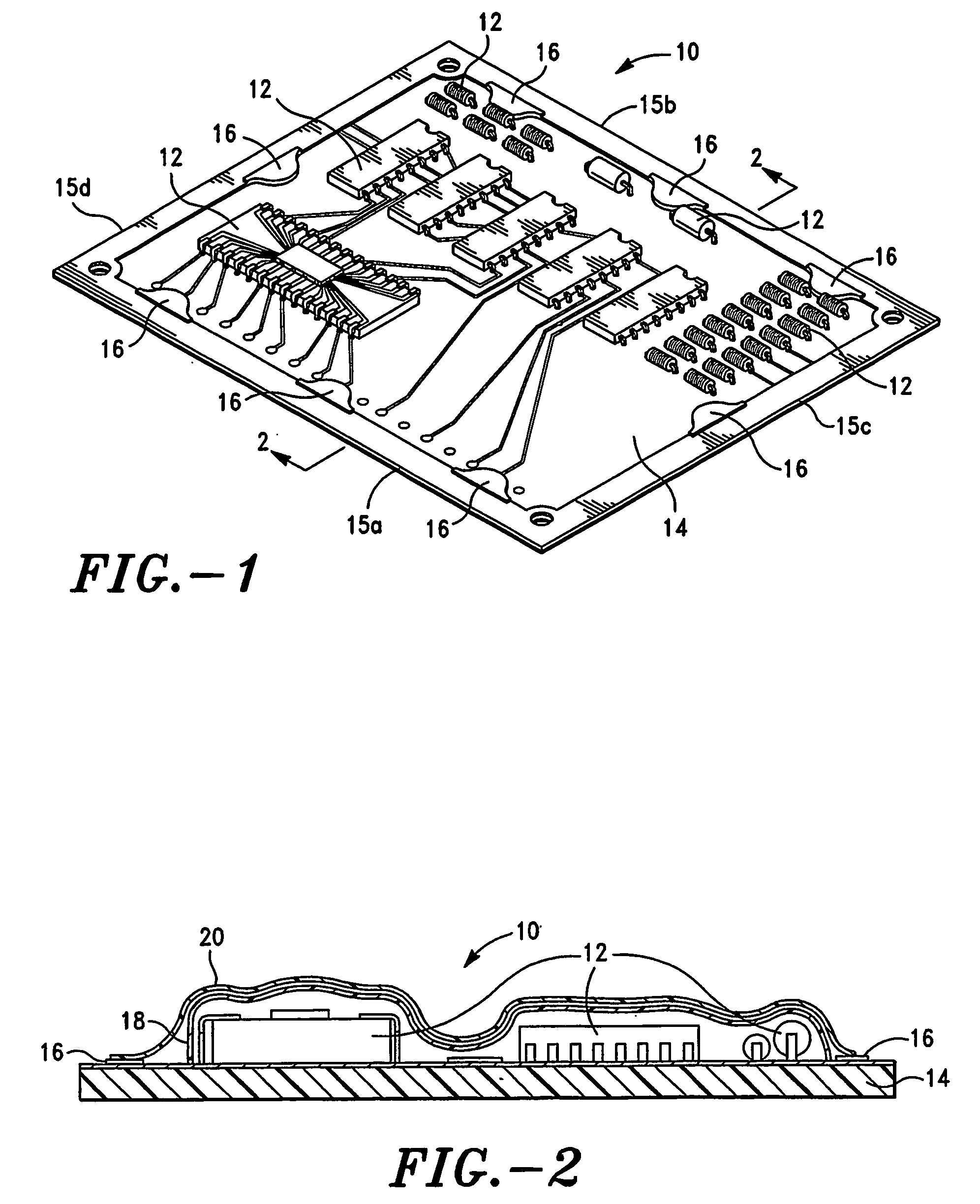Method and apparatus for reducing electromagnetic emissions from electronic circuits
a technology of electronic circuits and electromagnetic emissions, applied in the field of shielding electromagnetic emissions generated by electronic circuits, can solve the problems of high-speed electronic circuits (such as microprocessors or digital signal processors) generating high levels of electromagnetic emissions, proximate electronic circuits to malfunction, interference with other electronic circuit operations, etc., to reduce electromagnetic emissions, reduce the space required for the electromagnetic emission shield, and reduce the effect of electromagnetic emissions
- Summary
- Abstract
- Description
- Claims
- Application Information
AI Technical Summary
Benefits of technology
Problems solved by technology
Method used
Image
Examples
Embodiment Construction
[0011] A typical electronic circuit is depicted in FIG. 1, and coated electronic circuits in accordance with exemplary embodiments of the present invention are depicted in FIGS. 2-4. While the invention will be described in detail hereinbelow with reference to these exemplary embodiments, it should be understood that the invention is not limited to the specific configurations of the electronic circuits shown in these embodiments. Rather, one skilled in the art will appreciate that a wide variety of configurations of electronic circuits may be implemented in accordance with the present invention.
[0012] Referring to FIG.1, a typical electronic circuit 10 is shown that includes a plurality of individual electrical components or circuits 12 mounted on a printed circuit board 14. It should be understood that the invention is not limited to any particular number or types of electrical components. Rather, the invention may be applied to any electronic circuit in which it is desired to red...
PUM
 Login to View More
Login to View More Abstract
Description
Claims
Application Information
 Login to View More
Login to View More - R&D
- Intellectual Property
- Life Sciences
- Materials
- Tech Scout
- Unparalleled Data Quality
- Higher Quality Content
- 60% Fewer Hallucinations
Browse by: Latest US Patents, China's latest patents, Technical Efficacy Thesaurus, Application Domain, Technology Topic, Popular Technical Reports.
© 2025 PatSnap. All rights reserved.Legal|Privacy policy|Modern Slavery Act Transparency Statement|Sitemap|About US| Contact US: help@patsnap.com



